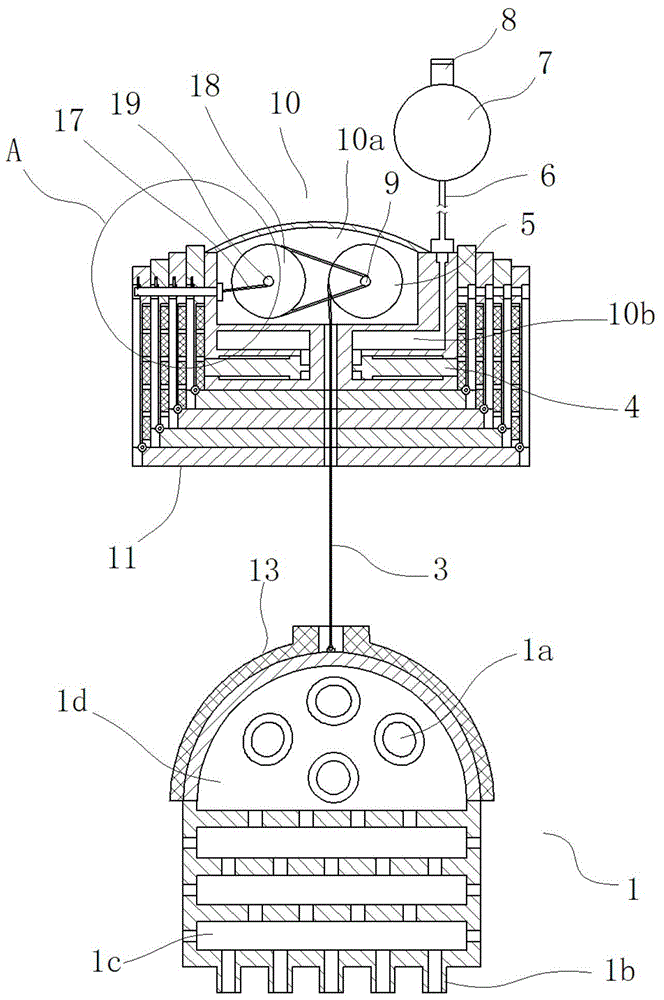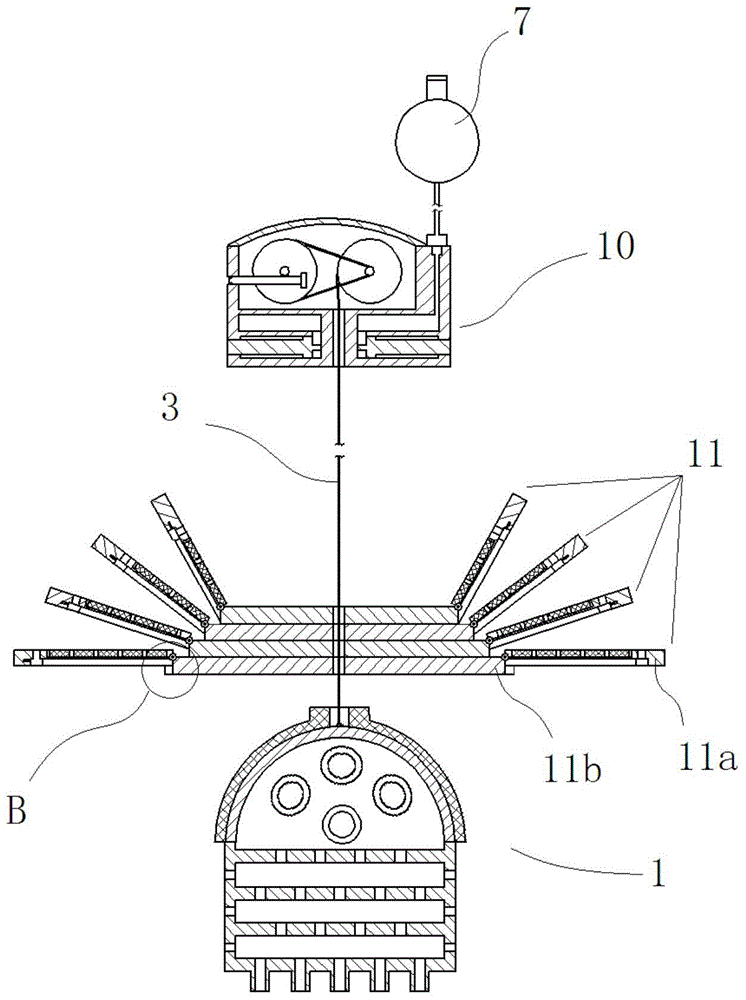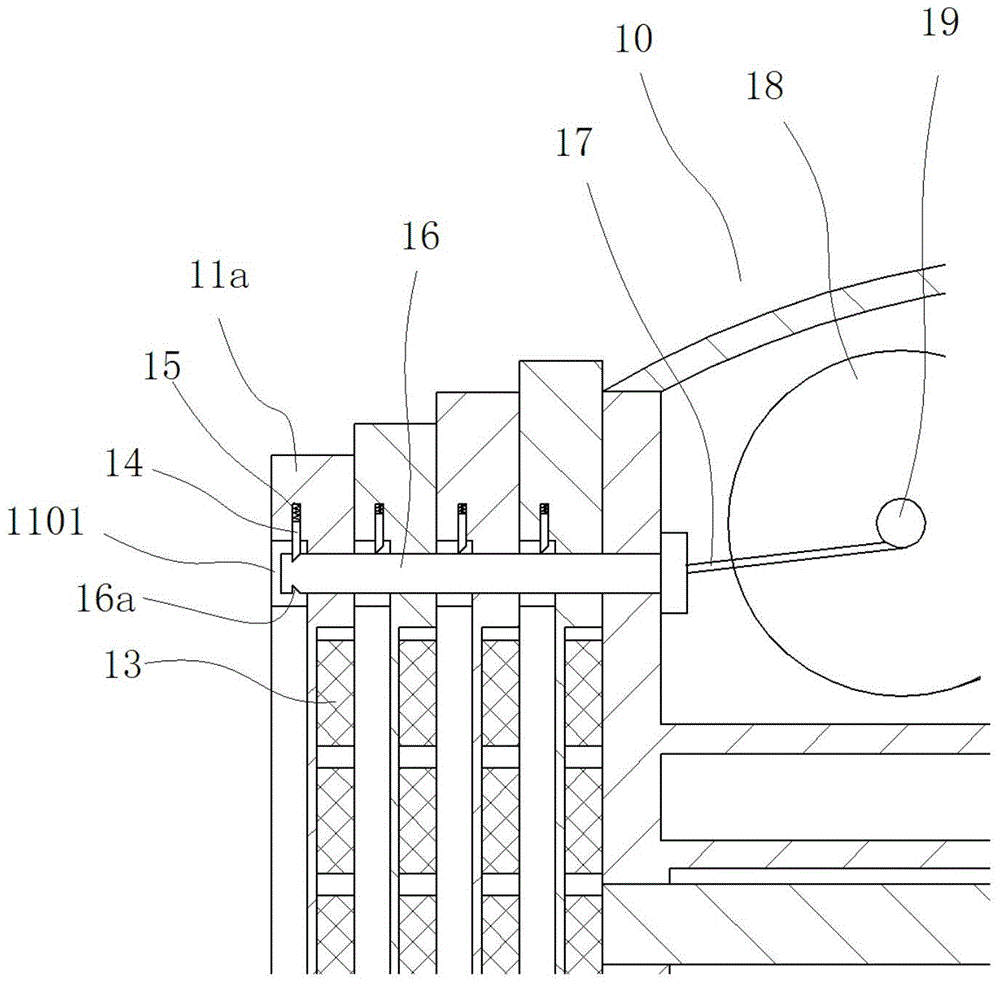Intertidal zone floating reef
An intertidal zone and floating-based technology, applied in fish farming, application, climate change adaptation, etc., can solve the problems of inability to achieve fish gathering effects, inconvenient placement and setting of fish reefs and algae reefs, poor primary fish gathering effects, etc. problem, to achieve good protection effect, good fish gathering effect, and rich biological species
- Summary
- Abstract
- Description
- Claims
- Application Information
AI Technical Summary
Problems solved by technology
Method used
Image
Examples
Embodiment 1
[0022] Embodiment 1: as figure 1 In the shown embodiment, a floating reef in the intertidal zone includes a floating base 10 and a submerged base 1, wherein the upper surface of the floating base is provided with shell fragments, and an isolated upper chamber 10a and a lower chamber 10b are provided in the floating base, The upper chamber is provided with a bobbin 5 for winding the rope 3, and four expansion bases 11 arranged in parallel in the vertical direction are arranged under the floating base, and a control expansion base and a floating base are arranged between the floating base and the expansion base. Separate disengagement mechanism. The sinking foundation and the floating foundation are connected by ropes, and the ropes run through the middle of each extended foundation. The upper part of the submerged base is hemispherical, and the lower part is cylindrical or conical. The submerged base is provided with an inner cavity 1d and several water-permeable layers 1c. T...
PUM
 Login to View More
Login to View More Abstract
Description
Claims
Application Information
 Login to View More
Login to View More - R&D
- Intellectual Property
- Life Sciences
- Materials
- Tech Scout
- Unparalleled Data Quality
- Higher Quality Content
- 60% Fewer Hallucinations
Browse by: Latest US Patents, China's latest patents, Technical Efficacy Thesaurus, Application Domain, Technology Topic, Popular Technical Reports.
© 2025 PatSnap. All rights reserved.Legal|Privacy policy|Modern Slavery Act Transparency Statement|Sitemap|About US| Contact US: help@patsnap.com



